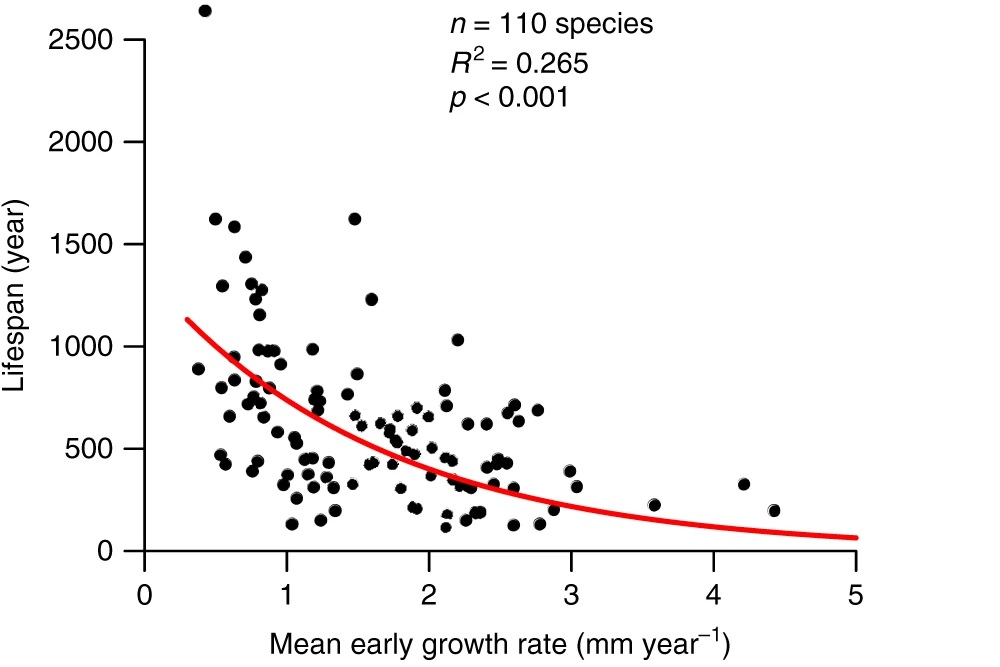By Rocío Urrutia, adjunct investigator at the Center for Climate and Resilience Research (CR)2
It has been reported that increased CO2 emissions, nitrogen deposition and temperature rises will accelerate the growth of many tree species around the globe. Meanwhile, current vegetation models project that this stimulated growth in forests will continue into the future, thereby reaffirming their important role as carbon sinks. However, for some forest ecosystems it has been reported (Korner 2017; Büntgen et al., 2019) that these increased growth rates will lead to a shortening of the trees’ lifespan, increasing mortality rates. This increased mortality will have a negative effect on the carbon sink, as carbon will again be released into the atmosphere. For a forest to act as a carbon sink, it is not only necessary that the trees capture more CO2 than they release; their mortality must also be low, and the carbon must have the longest “time of residence” possible in the forest.
This trade-off between growth and lifespan reported previously for some forests, was analyzed for the first time at the global level in the article Forest carbon sink neutralized by pervasive growth-lifespan trade offs, published in the journal Nature Communications. Researcher Jonathan Barichivich of the Center for Climate and Resilience Research (CR)2 participated in the study, as did Ricardo Villalba, an Argentine scientist who has worked closely with the centre for decades. In the study, growth rings from 110 tree species in tropical, temperate, and boreal ecosystems were used to assess the extent of this trade-off. The study confirmed previous reports that the species with the fastest growth rates in their first few years of life also have the shortest lifespan, with the opposite being true for the slowest-growing trees (Figure 1). This is not only confirmed in different species, but also within each species: trees that grow faster do not live as long.
 Figure 1. Relationship between growth rate (average width of rings in the first ten years of life) and maximum lifespan for 110 tree species around the world. The red line describes a negative exponential curve adjusted to the data, which indicates that the greater the growth rate, the lower the lifespan of the species. Source: Figure taken from the original publication.
Figure 1. Relationship between growth rate (average width of rings in the first ten years of life) and maximum lifespan for 110 tree species around the world. The red line describes a negative exponential curve adjusted to the data, which indicates that the greater the growth rate, the lower the lifespan of the species. Source: Figure taken from the original publication.
The study also found that this trade-off between growth and lifespan was not determined by environmental or climatic variables, but occurred independently, and that is why it is observed in different species inhabiting places so diverse and distant from one another. According to the authors, the trade-off could be happening because trees that grow more rapidly reach their maximum size potential earlier, and thus die earlier as well. However, the causes are not yet clear.
The effect of the studied trade-off on the dynamic of a particular species was evaluated using a forest simulator, which found that the increase in biomass stocks (initial carbon sink) is sporadic and reverts once growth is no longer stimulated. This results primarily because lifespan shortens and tree mortality increases. In practical terms, this means that the biomass stocks do not increase in the long term. These results apply principally to high latitude ecosystems and tropical forests, for which growth increases have been reported that could lead to early mortality.
Current global vegetation simulations predict that forests will continue to be net carbon sinks in the decades to come. But the authors of this work argue that the growth-lifespan trade-off should be taken into account in the models, in order to simulate more realistically what is happening with global carbon storage.
Given these findings, it is important to take into account that the increased growth in forests is not occurring everywhere in the world, and that CO2 fertilization is not as widespread as expected, as it depends heavily on the conditions of the forest site itself. This means that not all places on the planet necessarily produce accelerated tree mortality.
What about Chile? In our country, there is no information as to whether the initial growth rates of different species have increased or not, which is crucial to understanding whether mortality will accelerate. And to obtain a definite answer, it will be necessary to monitor the carbon dynamic and flows over the long term, which will not be easy because funding sources are limited. For close to a decade now we have been studying the Alerce forests, a clear example of a species that grows very slowly and can live for thousands of years. But this is not enough; it is to be hoped that we will have the chance to permanently monitor our pristine forests in order to understand how the changing climate is affecting the dynamics and survival of our ecosystems.
References
Brienen, R.J.W., Caldwell, L., Duchesne, L. et al. Forest carbon sink neutralized by pervasive growth-lifespan trade-offs. Nat Commun 11, 4241 (2020). https://doi.org/10.1038/s41467-020-17966-z
Büntgen, U., Krusic, P.J., Piermattei, A. et al. Limited capacity of tree growth to mitigate the global greenhouse effect under predicted warming. Nat Commun 10, 2171 (2019). https://doi.org/10.1038/s41467-019-10174-4
Körner C. A matter of tree longevity. Science. 2017 Jan 13;355(6321):130-131. doi: 10.1126/science.aal2449. PMID: 28082545.





